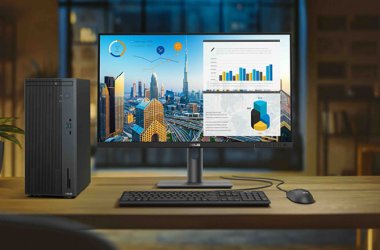By Mohamed Al-Ghazali, Director Wireline Sales, MEA, CommScope.

The most important trends driving broadband networks in the coming year are a natural extension of the progress and challenges we’ve seen in 2021. In particular, the global response to COVID-19, building momentum in network investments, and continued innovation in broadband technology are all contributing to the next phase of evolution in broadband. We’ve defined six areas that will steer this evolution in 2022: continued bandwidth growth, extended access to broadband, fiber deployment expansions, augmentations in DOCSIS and DAA, increased intelligence in cloud-native network management software, and the changing design of modern broadband technology.
The Middle East is on the path of rapid expansion in the coming years when it comes to digitalisation and cloud computing. Government initiatives such as UAE vision 2030, New Kuwait’s 2035 nationwide digital roadmap, Bahrain’s Cloud First and Saudi’s $18bn plan to develop 18 data centres will be instrumental in the deployment of bradband and fibre technology.
Bandwidth Growth
In the past year, we’ve observed a ~20% growth rate in both upstream and downstream residential average bandwidth usage during the busy-hour window, with corresponding spikes and dips occurring as nations and cities locked down and returned to the “new normal” with each of the COVID waves. We expect that activity to continue. Adding upstream capacity will be increasingly important as people use more high-bandwidth two-way communications-like video conferencing-and upload more and more video to the cloud.
And as we contend with the outgrowth of consequent remote work and remote schooling, customer demand and expectations for higher peak bandwidth levels will also increase. Network interaction during busy times leads to congestion and longer queues, which results in higher latency and jitter. MSOs will prioritise innovation that enhances overall network quality and customer satisfaction.
In the future, we’ll see service level agreements (SLAs) build beyond the current ranges to accommodate these changing usage habits. And, in turn, these higher SLAs will give rise to new bandwidth-intensive services like augmented reality (AR) and virtual reality (VR).
Broadband Access
In addition to increasing bandwidths, the coming years will also build momentum around a more ubiquitous distribution of broadband service to many under-served areas. Several funds and initiatives to build more equitable access — such as Egypt’s initiative to connect more than 60 million people living in rural areas with high-speed internet to provide better knowledge, career, and training — will be driving technology and device sales across the board as more subscribers gain access to broadband. Moreover, Egypt’s initiative plans include adapting a faster internet using fiber-optic cables.
Similarly the South African government has drafted a National infrastructure plan 2050 which aims to provide high speed internet in every community by 2023-24 through private-public cooperation. The Kenyan government is also working on an initiative in collaboration with UNESCO to provide internet connectivity to schools. The pilot project was launched towards the end of last year with 13 schools in a bid to enhance equity, access and quality of learning.
We will see fiber-based XGS PON and coaxial-based DOCSIS 3.1 coming to many new areas that have not previously seen high-quality bandwidth services, including both rural and inner-city areas. These investments will create a network and roll-on effect with commensurate increases in revenue and the ability to add more staff to local operators. We expect to be seeing exciting new economies and capabilities coming from rural and inner-city operators in the next year.
We’re also seeing an increased level of competition for broadband access as well. There’s an intense race underway as companies compete to offer broadband service from near space. SpaceX has expanded its constellation of low Earth orbit satellites with the launch of Starlink satellites. Amazon recently announced plans to build internet satellites in 2022 which will provide high speed internet to anywhere in the world.
These milestones will increase pressure on existing incumbents to find the right balance in upgrading their networks. That said, these incumbent cable networks will have different kinds of limits on the types of service they provide to subscribers.
Fiber Deployment
For many operators, fiber deployments will grow rapidly over the next several years. For example, some cable operators are planning for fiber deeper HFC deployments to help reduce Service Group sizes and congestion. These deployments will utilise Ethernet and PON to provide connectivity to DAA nodes in the future. Some telco and cable operators who are already deploying PON solutions will likely be expanding those solutions to more geographic regions (due to drivers like the aforementioned RDOF program). Other cable operators will begin to transition from coaxial-based broadband solutions towards PON-based broadband solutions (both EPON and XGS PON) in the future.
DOCSIS and DAA Evolution
2022 will be a big year for DOCSIS, as we begin the deployment of the last phases of DOCSIS 3.1 features. We will see significant of bandwidth augmentation upgrades to 85 MHz upstream mid-split, 204 MHz upstream high-split and downstream 1.2 GHz. Many of these upgrades are in direct response to the uptick in bandwidth—especially in the upstream—related to COVID-19. We will also see more enablement of DOCSIS 3.1 OFDMA and OFDM channels. These final stage DOCSIS 3.1 upgrades will serve as an important bridge between today’s networks and the DOCSIS 4.0 networks of 2-3 years from now.
Gamers in the region have a reason to cheer with low latency DOCSIS (LLD) coming online. LLD has the potential as a new revenue stream for operators targeting the gaming segment, as well as a competitive feature set that will improve the general broadband experience.
We expect cable operators to continue their trend towards distributed access architecture (DAA) rollouts. These DAAs lay the groundwork for future technology injections, such as the higher bandwidths of DOCSIS 4.0 solutions. We have observed a very steep uptick in operators deciding to jump directly to Remote MACPHY architectures. However, the key for the vast majority of operators is the flexibility to choose an architecture and pathway that works best with their unique network. Luckily, a host of technology innovation—like our RxD, which enables a Remote PHY deployment to be upgraded to Remote MACPHY via software—will provide many choices for operators to achieve their DAA of choice.
Cloud-Native Network Management Software
The target for future network management software is to capitalize on the increased availability of streaming analytics collected from many DAA devices in the field. This will provide quicker access to much more data covering more network operational parameters than ever before. Virtualised software in the cloud will utilise newly developing AI/ML techniques to rapidly digest the data and identify looming problems in the CIN network, the HFC Plant, the DOCSIS network or the PON network. These automated network management systems should correct problems before subscribers begin to feel any negative effects. Overall, this approach will ensure that future networks are continuously monitored and adjusted for optimal performance.
Looking to the future, this type of software could also be used to manage networks in the home, for businesses and public venues. We may see more subscription-based models where IT teams can deliver exceptional user experience by tapping into AI enabled software as a service troubleshooting tools. Comprehensive monitoring platforms that provide automated support with robust fault will be critical in managing distributed antenna systems and small cells.
Technology Design
One of the greatest challenges for vendors in the previous year has been designing broadband network products in an age of shortages. But modularity and efficiency have emerged in direct response to global supply chain constraints and are some of the trends that will continue well into next year. Additionally, improving the environmental footprint of devices and components is a large part of how vendors are approaching challenges to designing the next generation of broadband products. For example, we’re leading initiatives to drive down power consumption, lower operating costs, and reduce our energy footprint. These are all a part of a larger movement to improve our industry through innovation.
The coming year, as well as the years that follow, will be defined by these evolutions and incremental innovations. We know where the industry is headed, and we are seeing operators take the necessary steps in building a foundation towards that future- but the key is in the details.
There are still many pathways for operators to deliver their networks of the future and define the way that billions of people around the world experience broadband and video. Each of these six areas will inform those pathways as operators balance their broader vision with advances in technology to decide the future of broadband networks.





